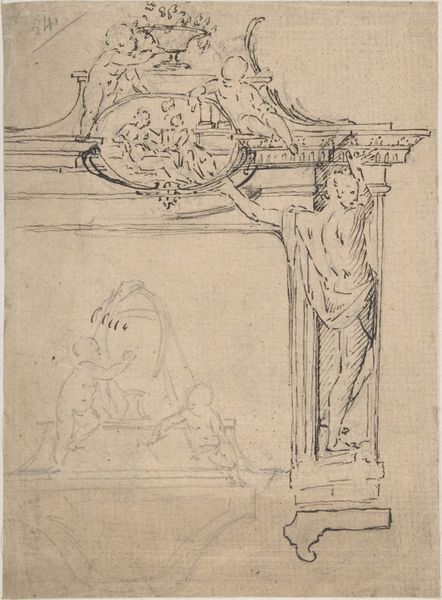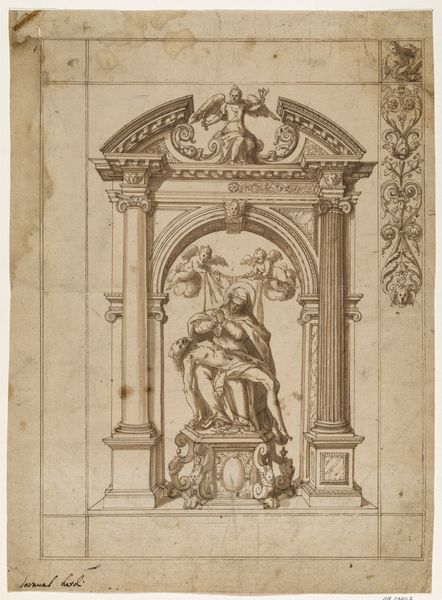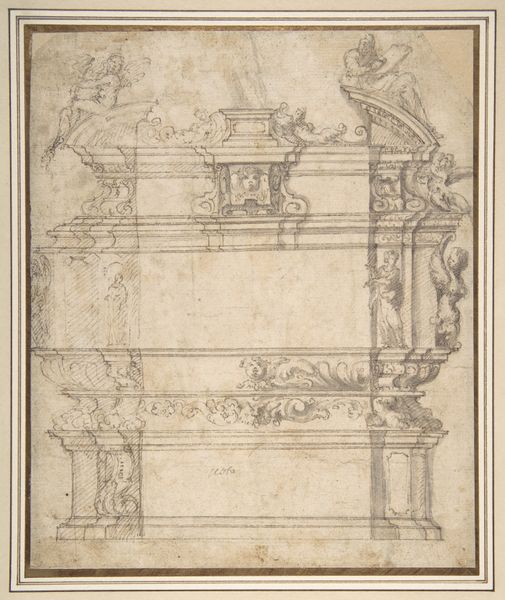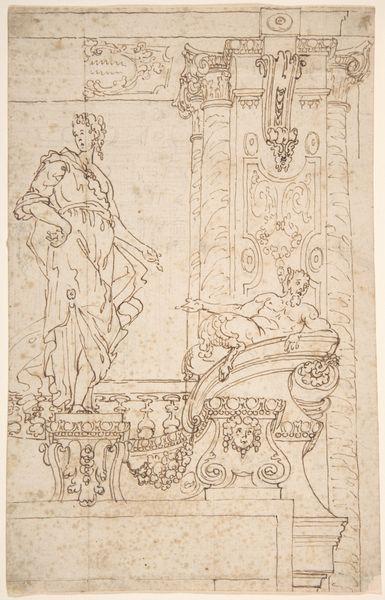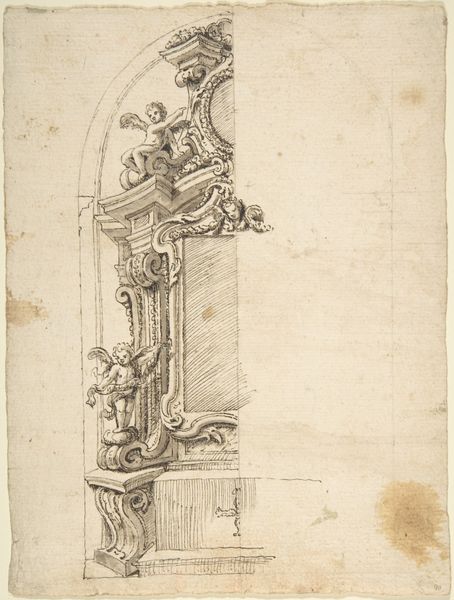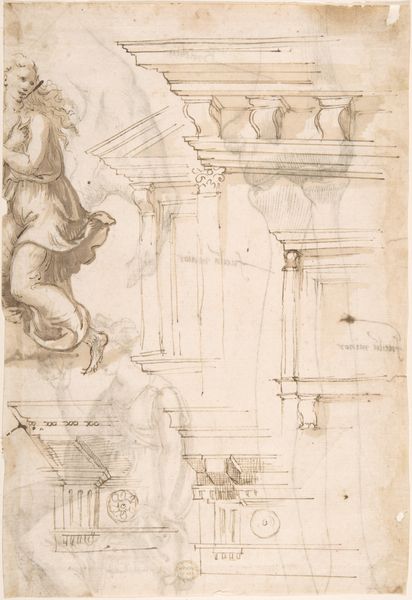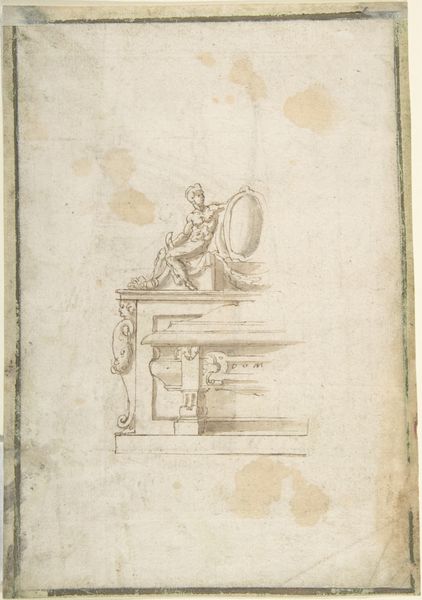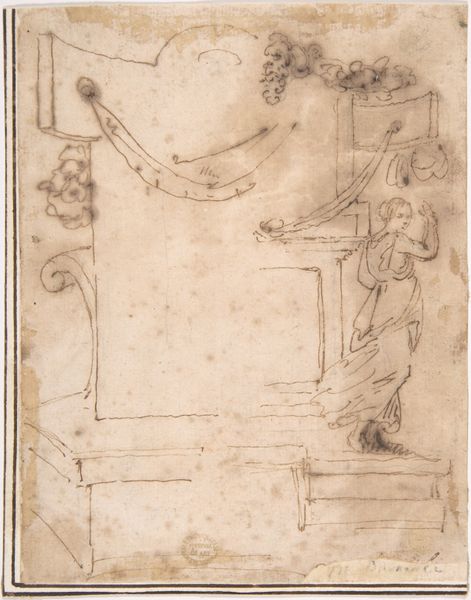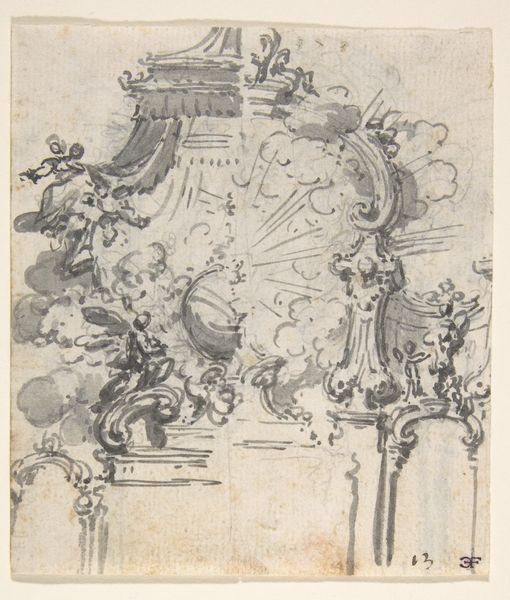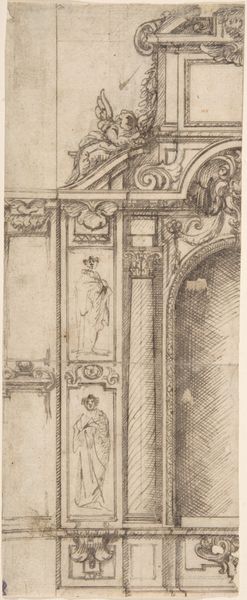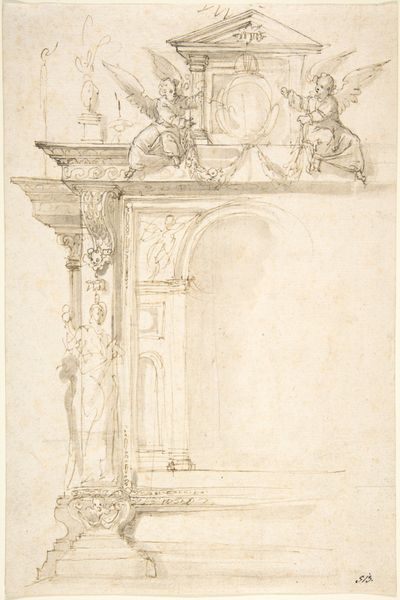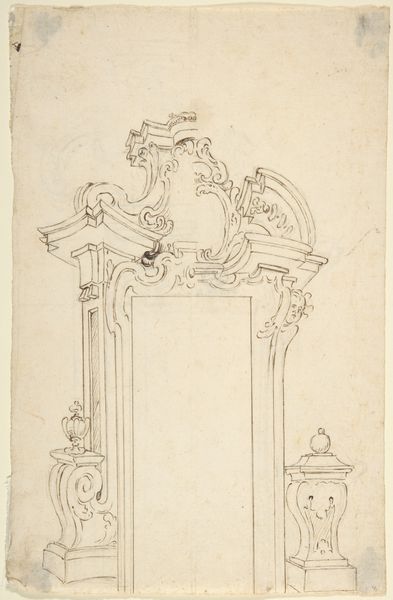
Design for a Stage Set with Two Thrones (Recto); Landscape (Verso) 1800 - 1900
0:00
0:00
drawing, paper, ink
#
drawing
#
paper
#
ink
#
history-painting
Dimensions: 4-7/8 x 7-15/16 in
Copyright: Public Domain
Curator: This ink drawing on paper, dating from the late 18th or early 19th century, presents a “Design for a Stage Set with Two Thrones.” It currently resides at the Metropolitan Museum of Art. What’s your initial take? Editor: My immediate impression is one of grand, albeit crumbling, power. The thrones are draped with fabric, hinting at opulent ceremonies, but the sketchy quality suggests a world in transition, perhaps even decline. Curator: That sense of transition is fascinating. These theatrical designs offer a lens into the political dramas unfolding at the time. The thrones, meticulously drafted, stand as potent symbols of authority, reflecting a world where spectacle was interwoven with power. Consider the symbolic weight of thrones – not merely seats, but stages for projecting ideology and legitimacy. Editor: Yes, the very structure invites speculation: What plays were envisioned for this set? Who were the audiences meant to be? The placement of the thrones opposite one another makes me wonder about rival claimants to the throne or factions vying for influence. What is the dramatic tension, historically or psychologically, to be unearthed here? Curator: I agree that the theatrical stage, especially in that era, becomes an extension of the court itself, so we may have competing parties or different branches of the royal families. Notice the drapes that give these figures definition, but could just as easily act as camouflage or shadow play. How does the manipulation of light and shadow function, emotionally? Editor: Precisely! The sketch is rife with emotional uncertainty—there’s potential both for hope and for impending doom. And in theatre, the act of shadowing can add mystery, and give space to our fears, but also our desire. Curator: Yes, theatrical design invites the symbolic embodiment of ideas within a specific setting. It makes me consider our persistent use of familiar motifs and their underlying, latent messages. Editor: Indeed, it gives a whole new meaning to "the stage of history." Perhaps this very drawing is an effort to think through those symbolic connections. Curator: Exactly, in essence, a meditation through visual symbolism and performance.
Comments
No comments
Be the first to comment and join the conversation on the ultimate creative platform.
